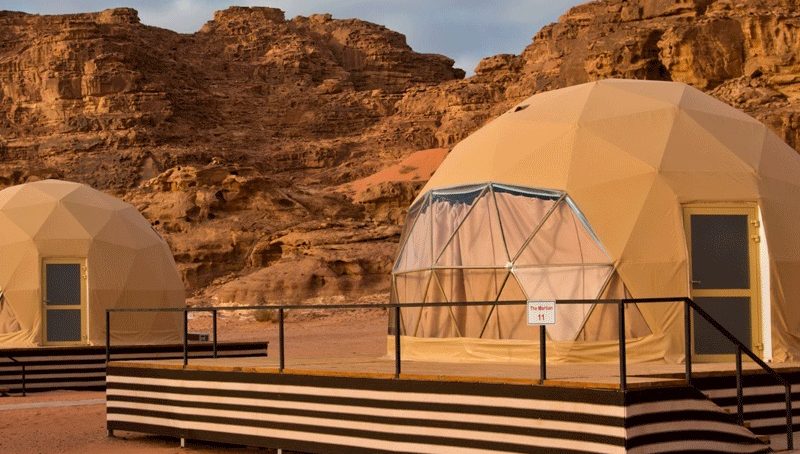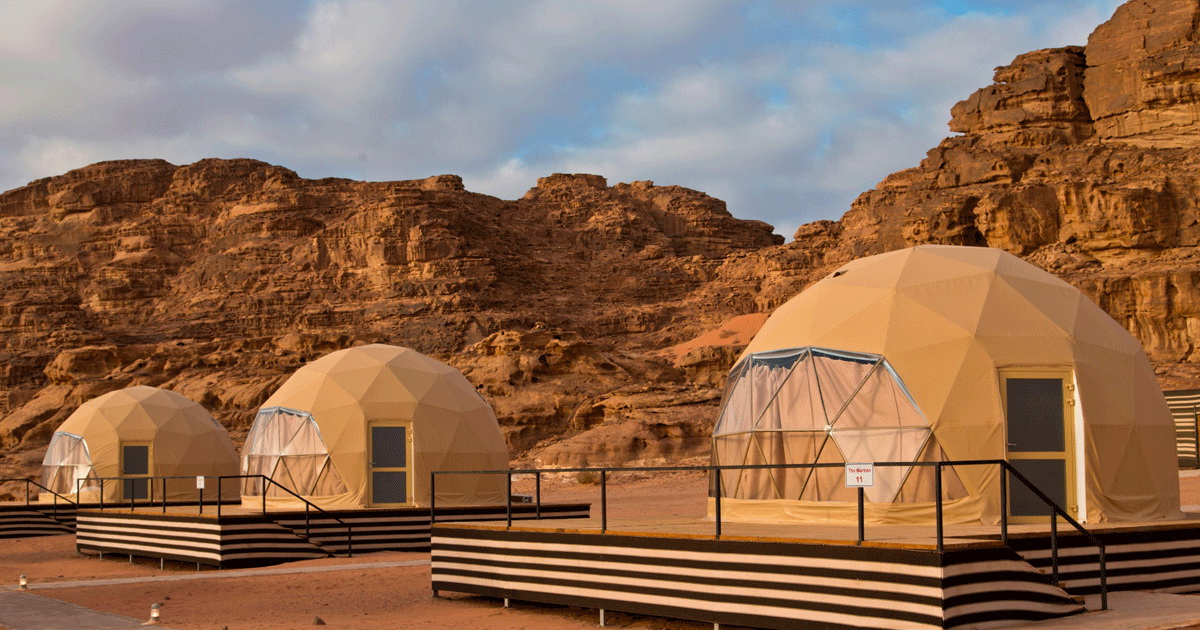Christopher Lund, Head of Hotels for Colliers International MENA gave Hospitality News ME discusses Glamping. Here’s what he said …

As consumers seek out more unique experiences, hoteliers are stepping away from the traditional bricks and mortar business and diversifying their offerings. Against this backdrop, glamping has witnessed a rise in popularity in recent years which has seen it enter the mainstream hospitality market. Christopher Lund, head of Hotels for Colliers International MENA, tells us more
A hybrid of glamor and camping, glamping provides a way to experience nature without having to forgo the luxury of home comforts or deal with the headache of putting up a tent. It allows the holidaymaker comfort and luxury, while maintaining respect for the natural surroundings. At the same time, glamping offers exclusivity and uniqueness in its accommodation offerings and location.
The global rise of glamping
The growth in demand for glamping can be attributed to the rise of ecotourism, wellness tourism, adventure tourism and agritourism (EWAA). The emergence of the ‘consumer with a conscience’ and ethical consumerism, which has seen hoteliers adopt environmentally friendly amenities, is expected to continue driving the expansion glamping.
Glamping is especially popular within the domestic market among consumers opting for staycations during the weekends and holiday periods, whether campers, solo travelers or families.
The luxury tent business has been primarily concentrated in Africa but its popularity is on the rise elsewhere on the back of rising demand. Destinations as far apart as Chile and Cambodia are now providing some of the most unique offerings, including igloo-shaped domes that have minimal impact on the environment and include their own composting device, as well as the first luxury floating resort. Unsurprisingly, major hotel brands are now also moving into the space, with several names setting up their own luxury tent resorts. Marriott collaborated with the Coachella Music festival in 2017 to offer luxury tents to attendees and, due to its immense success, returned the following year offering luxury yurts modeled after various W hotel destinations.
Glamping comes in different formats, with guests able to choose from a variety of options, including: cabins; safari tents; yurts; domes; wigwams; pods; micro lodges; teepees; and bell tents. Camping pods hold the largest market share since they are often viewed as safer than a tent or caravan and have lockable doors and windows. Aside from offering shelter and security, cabins have a cozy feel to them and are designed to withstand the elements. They are also an eco-friendly alternative to camping as they have minimal effect on the environment.
The type of accommodation offered is usually determined by the location and weather patterns of the area; for areas with stronger winds, rainfall or snow, the structures are more likely to be more permanent to accommodate the conditions.
Glamping in the GCC
Key destinations in the region, including Oman, Jordan and the United Arab Emirates, are tapping into the glamping trend. With its take on luxury accommodation and facilities, glamping is fast becoming popular with both locals and expatriates as they look to swop the hustle and bustle of the city for some peace and tranquility without having to travel too far.
In Dubai’s exclave Hatta, a new project featuring trailers and lodges has transformed the mountains in the region, giving glampers the opportunity to take in views of Dubai without having to sacrifice their creature comforts. The trailers and lodges can accommodate up to four people and are equipped with WIFI, TV sets and furniture that includes comfortable beds.
Wadi Rum in Jordan, with its breathtaking views of the landscape, offers ‘Martian’ domes, where guests can spend the night under the stars in ultra-comfortable surroundings. These domes come equipped with a private bathroom and shower, electricity, hot water, minibar and beds.
In the UAE, the hot summers traditionally deter individuals from engaging in outdoor activities between May and September, meaning the bulk of the glamping businesses, like Hatta, only operate outside of these months.
Opportunities for Glamping in GCC
The Middle East holds plenty of potential for glamping, largely due to its landscape, which can include mountainous regions, mangroves, coastal strips and sandy deserts in one place. With several national governments in the region moving to diversify their economies, glamping provides an important opportunity for countries to position themselves as ultimate tourist destinations. Destinations in the GCC that have been identified as offering opportunities include:
- Fujairah, UAE: the emirate boasts mountainous regions and is the only one of the seven emirates with a coastline on the Gulf of Oman, both of which give it the ideal geography for glamping. Fujairah also has a rich history that would undoubtedly be of interest to visitors.
- Ras Al Khaimah, UAE: Jebel Jais is perfectly positioned for glamping. The area usually registers cooler average temperatures than other landmarks in the country, while offering numerous adventure activities and diverse scenery with mangroves, sandy deserts and the mountains. Bin Majid resort in Al Jazirah Al Hamra offers such an experience with the added bonus of being situated right on the beach.
- Abha, KSA: located south west of Saudi Arabia, near Asir National Park, Abha’s mild climate makes it highly popular with domestic tourists and an ideal site for building on an existing market by introducing glamping.
- Al-Ula, KSA: planned developments in this location include a resort (Aman Resort) and a nature reserve – Sharaan. The nature of the city and the presence of a UNESCO World Heritage Site in Madain Saleh make it a prime location for the development of glamping.
- Al Ahsa, KSA: Home to the world’s largest oasis, Al Ahsa is ideally suited to glamping development. With its rich history and unique landscape, it has something to offer both domestic and international visitors.

Christopher Lund
Colliers International
Head of hotels














